Samsung HW-Q990F review: Surround sound doesn't get better than this
The top soundbar for Samsung's TVs just got an even better version

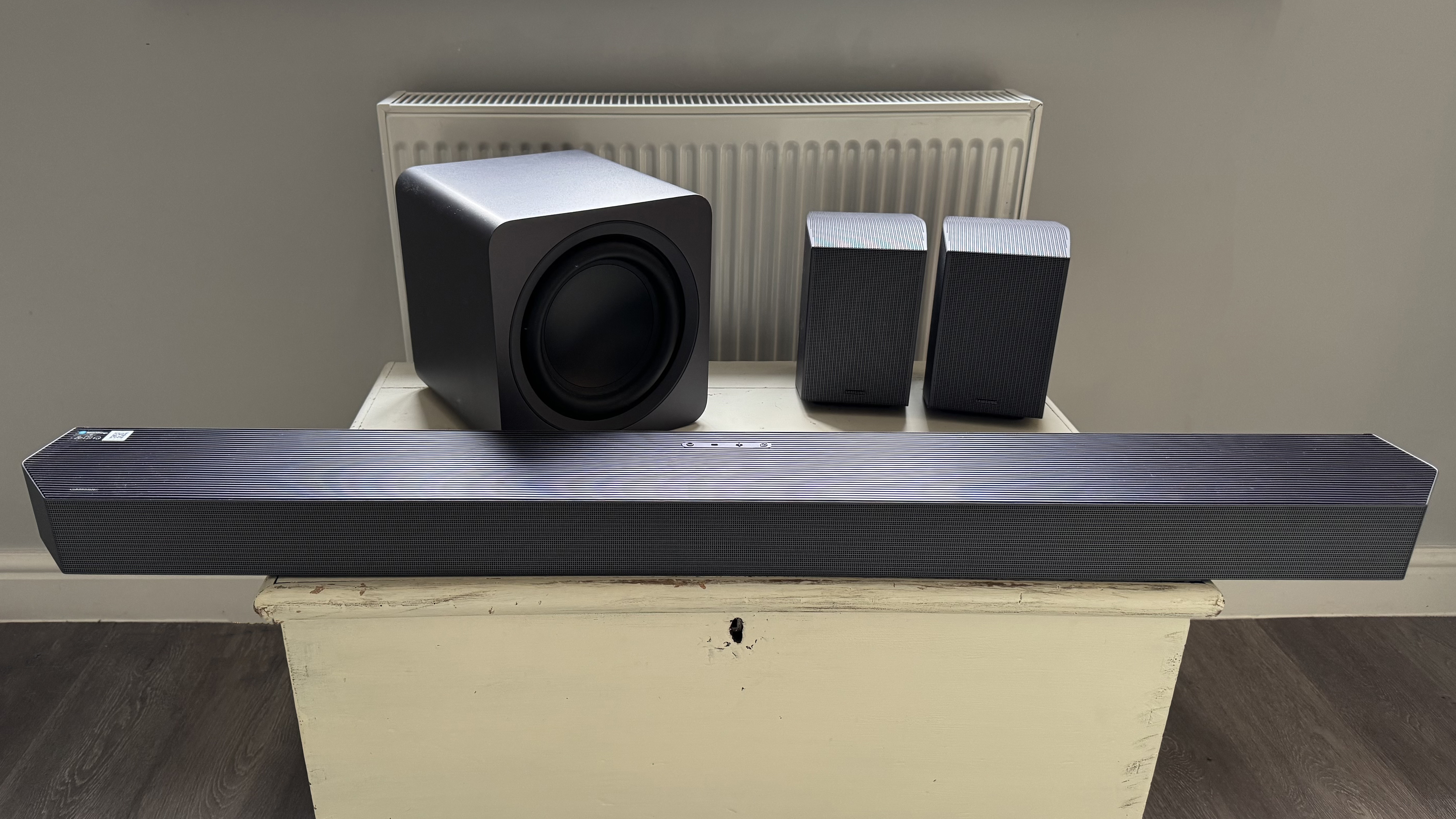
It’s generally not a great idea to try and fix things that aren’t broken. Fortunately, though, Samsung’s bold decision to redesign a key component of a soundbar system that’s been delivering spectacular results on the back of frankly minimal changes for years has actually resulted in the brand’s best soundbar ever.
-
+
The best sound for pound performance in the soundbar world
-
+
New sub design looks very cool
-
-
Four component system won’t suit clutter haters
-
-
While great value, it’s not cheap by soundbar standards
Why you can trust T3

Every year for what feels like forever, Samsung has released a new, only marginally altered iteration of its top-of-the-line, four-component, channel-rich flagship soundbar package. And always to universal acclaim and brisk sales – especially for those seeking the best soundbar for Samsung TVs.
For 2025, though, it seems as if Samsung’s soundbar engineers decided they needed to set themselves a challenge by quite radically redesigning a key part of this latest HW-Q990F model – the included subwoofer.
So it's out with the older, tall-yet-slim subwoofer – which comes complete with a side-firing driver – that’s been part of Samsung’s recent flagship soundbars for so long. And in its place comes a more compact and much 'cuter' new cubic bass speaker design – with separate drivers fitting into two of the cube’s opposing sides.
While this new subwoofer undoubtedly addresses complaints that the previous subwoofer design wasn’t as aesthetically appealing as the rest of Samsung’s flagship soundbar components, though, it’s undoubtedly risky to change such a key part of a winning sound quality formula so drastically. Has Samsung shot itself in the foot? Or has the best actually just got even better?
Price & Availability
By the standards of the soundbar world at large, the £1,699 / $1,999 / AU$2,099 price tag attached to the Samsung HW-Q990F looks pretty steep. Fortunately, as you can see from the shopping widget embedded above, it's fallen sharply since its January revea;.
This is much more than just a typical soundbar, though, as the hefty main bar component is joined in the box by both that swanky-looking new subwoofer, and a pair of heavy-duty rear speakers.
These speakers are able, too, to deliver a remarkably high real (rather than virtual) 16 channels of sound. With all this in mind, I’d say the Q990F’s price actually looks like potentially great value for everything that’s on offer – it's really one of the best surround sound systems, more than just 'soundbar'.
Get all the latest news, reviews, deals and buying guides on gorgeous tech, home and active products from the T3 experts
Design & Features

Samsung’s flagship soundbar packages have always benefited from seriously premium build quality and attractively industrial designs – at least for the main 'bar and surround sound speakers. The subwoofers, though, while not flat-out ugly, have tended to be the weakest design link – a situation the Q990F is out to turn on its head.
The Q990F sub’s startlingly compact new cubic shape is something you might actually choose to leave on show rather than try to hide down the side of a sofa or under a sideboard. Its edges are nicely rounded off rather than jagged and harsh, and its smooth finish looks elegant.
The shift to two 8-inch drivers on opposing sides of the cube looks surprisingly attractive too, and not just in a nerdy sort of way. The new design also raises hopes of a new level of bass performance, provided Samsung has been able to get those twin drivers working in perfect harmony.

The main bar element is a typically large affair, measuring in at 1232 x 70.8 x 138mm. This makes it better suited to the best 55-inch TVs or even 65-inch TVs and larger – which is likely the sort of screen size range someone spending close to four-figures on a soundbar will want to own anyway.
The Q990F wears its size well, with its double-angled left and right edges and hard, grilled plastic finish. Samsung has emphasised the horizontal axis of the top-edge grille this year to quite stylish effect, as well as going for a slightly lighter grey finish than the near-black of the soundbar's Q990D predecessor.
The top edge has a grille, just like the front and side edges, because the Q990F features up-firing speakers to deliver Dolby Atmos soundtrack height channel effects.
The rear speakers wear the same hard grey finish as the main bar, and sport a similarly angular look – including having a peaked top edge to help the integrated up-firing speaker angle its sound forward so that it can join up with the sound from the angled up-firing drivers found in the main soundbar.

All this talk of speakers and ‘joined up’ sound brings us to the Q990F’s single biggest feature appeal: Its 11.1.4 audio channel count.
This comprises front centre, left, and right, side left and right, front side left and right, and two up-firing drivers in the main bar; forward, side and up-firing drivers in the rears; and the chunky old ‘.1’ bass channel for the subwoofer.
As well as being able to provide dedicated real (rather than virtual) speakers for every channel in pretty much any Dolby Atmos or DTS:X sound mix, the side-front channels on the main bar, side firing speakers on the rears and angled design of the front and back up-firing channels all point you towards Samsung’s ultimate intention with the Q990F: to create as detailed, full and immersive a hemisphere of sound around the viewer as possible.
This is something, of course, that no soundbar without included rear speakers can truly achieve – even though there are one or two models, especially from Sony, that at least have a stab at it by using clever processing to create lots of extra ‘virtual’ speakers.
If you’re not playing a Dolby Atmos or DTS:X source, the Q990F carries an ‘upmixing’ mode that can expand anything, even plain stereo music, into a multi-channel experience that takes advantage of the package’s full channel array. Other available themed sound mode options include Game Pro, which emphasises the directionality of a game soundtrack to help you better detect where enemies may be lurking.
If the Q990F’s 16 channels of integrated sound are somehow not enough for you, it’s also equipped with Samsung’s Q-Symphony technology, enabling its speakers to join forces with those in a Samsung TV to create a larger centre channel effect.
The Q990F’s flexibility also extends to allowing you to hive the rear speakers off from the rest of the system so that they can become a standalone stereo streaming system.

Samsung has included a number of helpful tools for optimising the Q990F’s sound to different content and room conditions. The soundbar's Space Fit Pro system essentially runs an auto calibration routine to get the best volume balance between all the system’s channels, while an AI-driven Adaptive Bass Control system continually monitors the subwoofer’s output to try and minimise distortions and keep the bass in balance.
An AI-backed Active Voice Amplifier, meanwhile, can monitor ambient noise and boost dialogue playback when necessary, and an Adaptive Sound system uses AI again to assess the specific qualities of an incoming sound and optimise playback accordingly.
The Q990F is well-connected for a soundbar. In particular it carries a two-in, one out HDMI loop-through system that's capable of passing through 4K/120Hz HDR signals, meaning that gamers with flagship consoles or suitably capable PCs can attach their consoles directly to the soundbar rather than having to connect their consoles directly to their TVs and run the gauntlet of HDMI’s audio return channel (ARC) functionality’s potential lip sync issues.
The HDMI loop-through is also capable of passing both the HDR10+ and Dolby Vision premium high dynamic range picture formats, while other connection options include an optical digital audio input as well as the Bluetooth and Wi-Fi wireless options we now expect with any premium soundbar.
Via these wireless options, finally, in conjunction with Samsung’s increasingly helpful and well-featured Smart Things control app, it’s possible to stream audio into the soundbar using GoogleCast, Apple AirPlay, Tidal Connect and Spotify, as well as play files in any of the MP3, AAC, OGG, FLAC, WAV, ALAC and AIFF formats.
Sound Performance
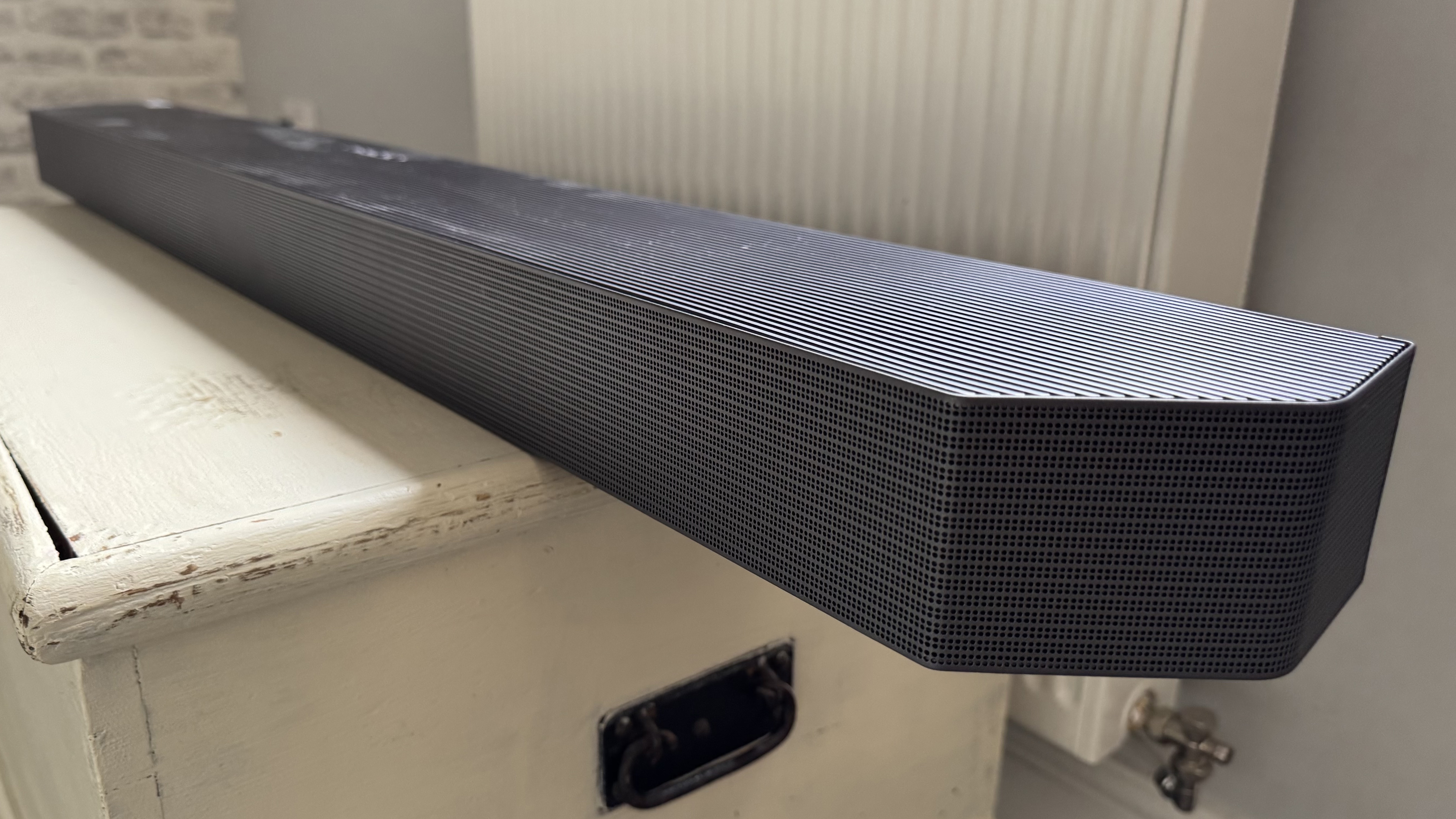
So to the moment of truth: has the new subwoofer messed up the all-important balance and legendary potency of Samsung’s flagship soundbars? Actually, no it hasn’t. In fact, in most ways it’s actually improved things.
For starters, the bass it produces plumbs depths that feel at least as profound as those of Samsung’s previous (uniformly excellent) flagship subwoofer package soundbars.
Just as importantly, despite the complexities of using a dual driver system, the Q990F’s new sub shows just as much intelligence and consistency when it comes to judging how hard or soft/loud or subtle its moment-to-moment input to a sound mix should be.
There’s a clear improvement over previous Samsung soundbar subwoofers, too, when it comes to the non-directionality of its low-frequency sounds, meaning that the bass just seems to exist throughout your room, as it should, rather than it seeming to be emanating explicitly from wherever you’ve placed the subwoofer.
The dual-driver configuration creates a smoother feel to the bass too, while following on from previous Samsung soundbars in being able to hit even the most extreme depths and volumes of bass without succumbing to crackling, buzzing, dropouts or other types of common distortion.
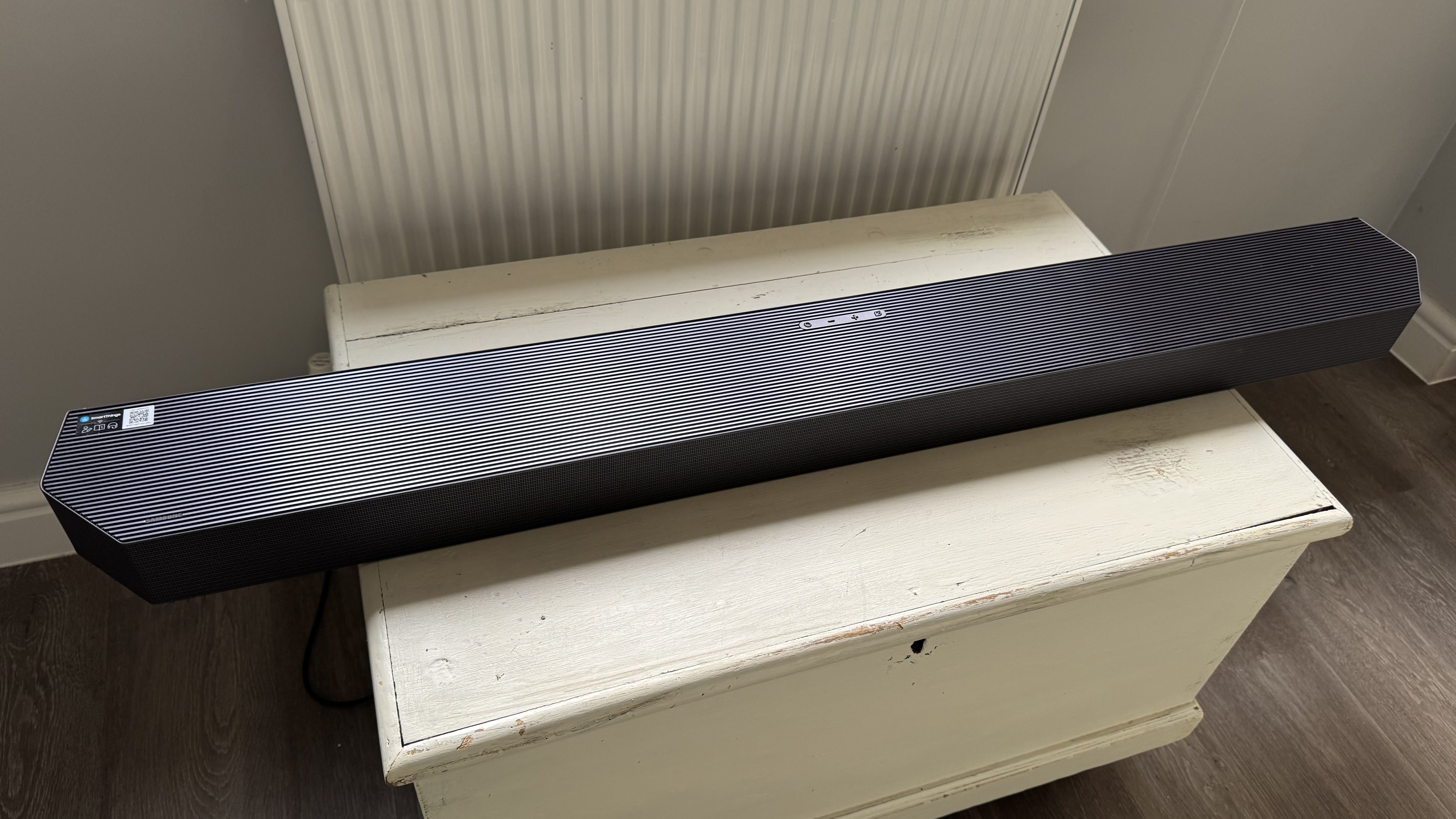
I’ve focused on the subwoofer so far just because its redesign is the biggest part of the Q990F’s story, not because it in anyway draws too much attention to itself. On the contrary, it still attaches incredibly seamlessly to the lower frequencies achieved by the main soundbar component, leaving no sense of a mid-low frequency gap, and still adapts its presence fantastically well to the constant changes in a film or TV show mix.
The new sub’s sensitivity to the rest of the speakers makes it easy to appreciate just how good the main 'bar and rears are, too. Particularly when it comes to creating that all-important hemisphere of sound around a viewer – which is such a key component of a truly effective Dolby Atmos or DTS:X experience.
There’s no sense of any gaps in the Q990F’s sound hemisphere, even when a particular sound effect transitions down the side of the room or over your head. You’re truly immersed in a seamless three-dimensional audio world, massively enhancing your involvement with whatever you’re watching.
The main soundbar and rears all continue the theme set by the new subwoofer of never succumbing to distortions or speaker breakdowns – even at wall-wobbling volume levels – and they never sound muddy, contained or overloaded, no matter how hard an action movie's sound mix might push them.
This is particularly impressive from the rear speakers, given that they have to fit three separate drivers into their compact frames. Their compactness doesn’t cause them to feel even slightly out of tonal kilter with the other two bigger components, either. Especially now that the subwoofer’s bass carries around the room so effectively.
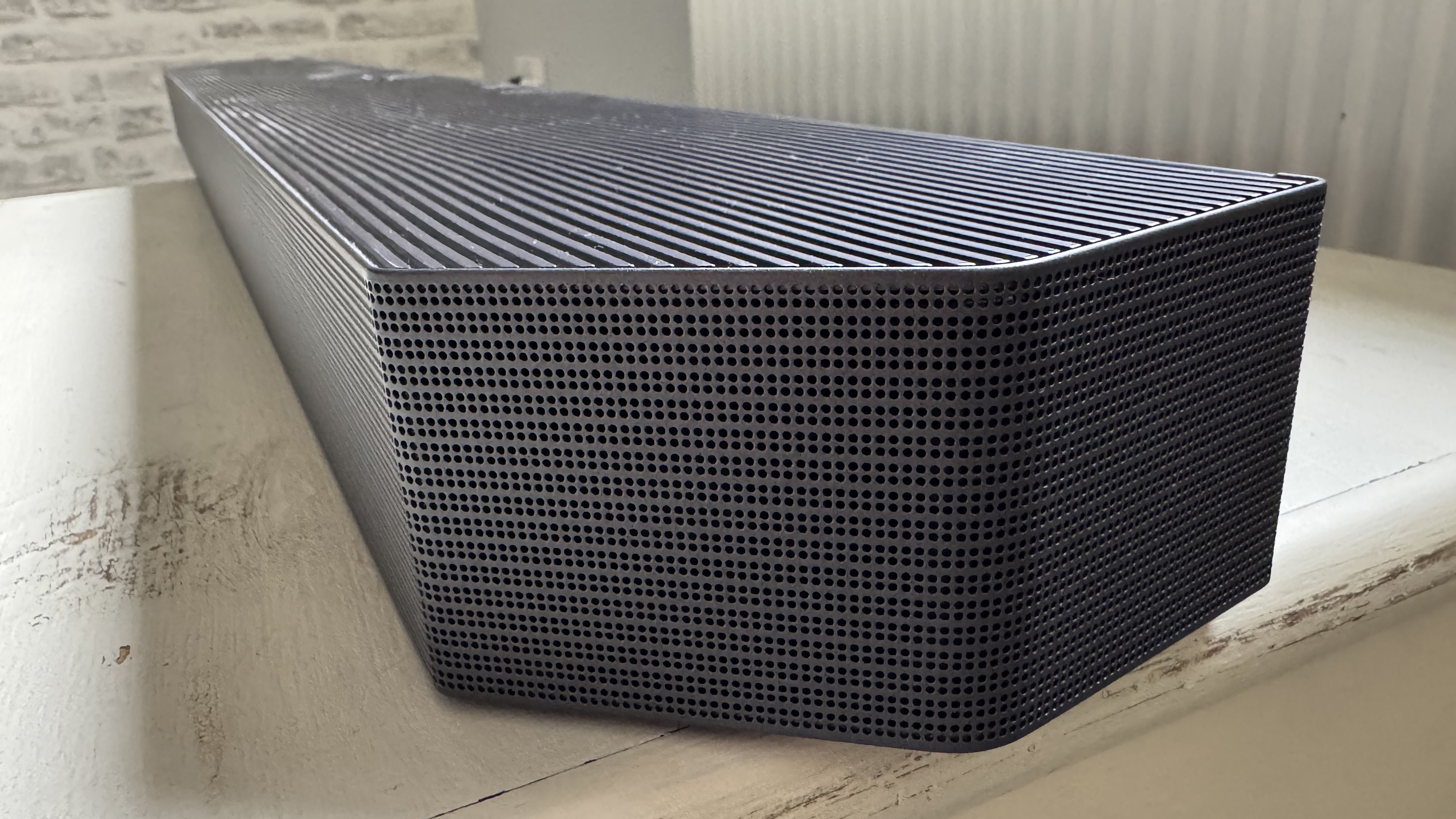
I should probably make it clear at this point that the Q990F can go loud. Really loud. The sort of loud that shouts ‘cinema!’ rather than just telly.
There’s nothing forced about the epic volumes it can reach, though; nothing ever sounds on the edge of breaking down, compressed, brittle or harsh. Nor are any details lost or drowned out – even when you’ve pushed the soundbar to volume levels way past comfortable.
On the contrary, at all times and all volumes, the Q990F delivers every detail, even the most subtle ones, with gorgeous clarity and precision, but also balanced, thus affording each effect in a mix the right amount of weight.
Effects, including dialogue, are also placed immaculately within the hemisphere of sound the soundbar creates, adding up to the most precise, detailed and complete sound stage I’ve heard from any soundbar package. Or any soundbar selling for this sort of money, anyway.
The Q990F’s irresistible combination of brutal power and subtle detail is particularly apparent in the wince-inducing (in a good way) potency it brings to those classic hard and fast impact sounds – punches, gunshots, the initial burst of an explosion, car crashes, and so on – that A/V fans love to hear.
Really, the only small issue with the Q990F’s movie performance is that the new subwoofer doesn’t seem quite as responsive to changes in frequency as its predecessor, dragging its feet ever so slightly when a mix calls for a sudden slight lift or drop in bass weight. This minor timing issue is only rarely noticeable, though, and is comfortably compensated for by the improvements the new subwoofer brings.
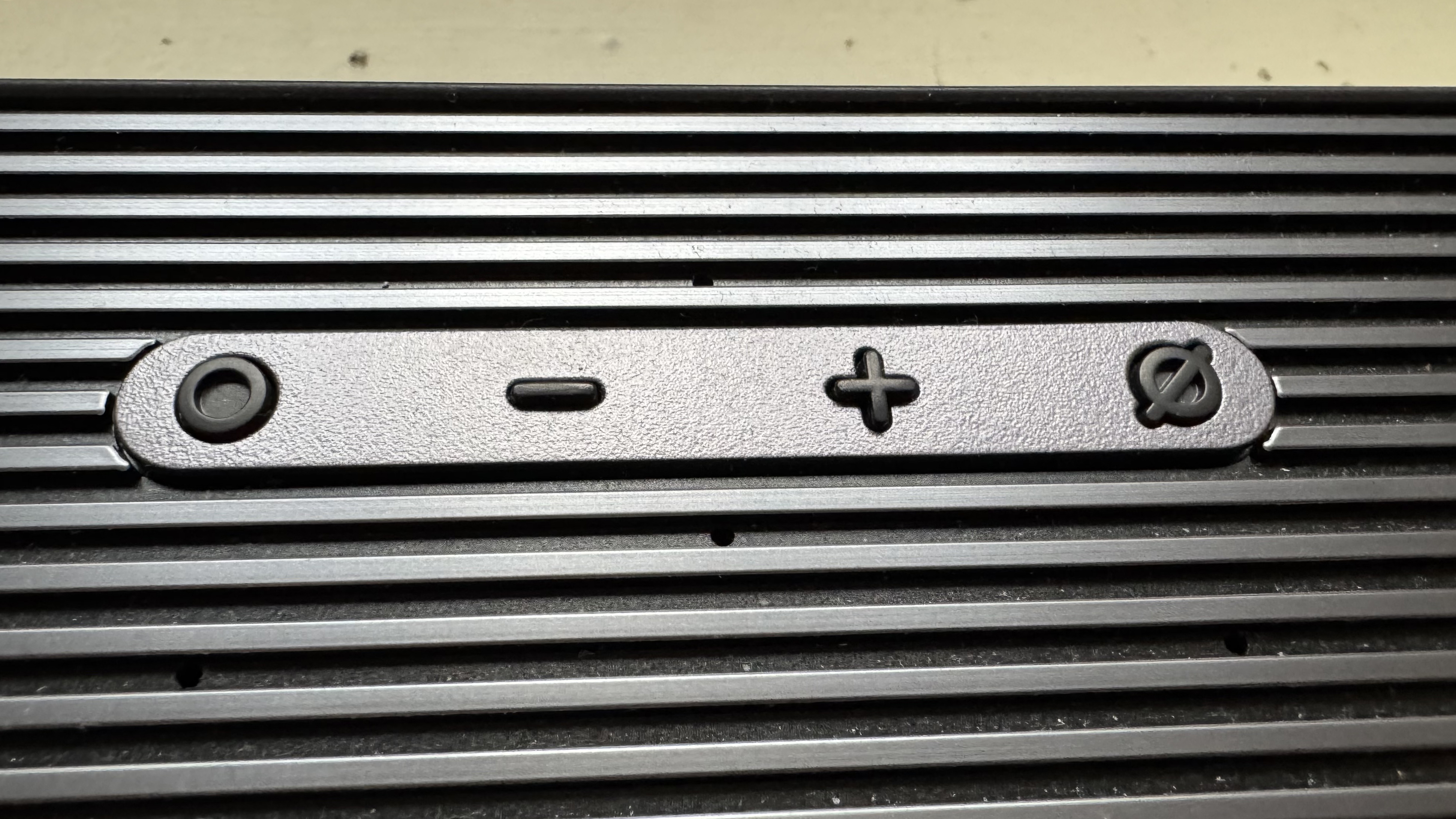
Samsung flagship soundbars used to struggle with music, seemingly finding it difficult to rein in or repurpose all the aggression that served them so well with film soundtracks for music. This musical blind spot was happily dealt with a couple of generations ago, though, and happily it hasn’t returned with the introduction of the new subwoofer design.
The Q990F can still use all of the power at its disposal to deliver music really loudly, but it doesn’t sound abrasive or caustic. In fact, its consistent blend of clarity, warmth and musicality never makes listening to music tiring or jarring.
While I think most people will prefer to stick with basic stereo playback from the Q990F when playing stereo music sources, Samsung’s Adaptive Sound feature does a much better job than most similar ‘upmix’ systems of converting two-channel music into multi-channel sound that takes advantage of all the Q990F’s speakers. The upmixes can sound a little muddled from time to time, though, but it's worth trying to see if it's to your taste.
Samsung Q990F review: Verdict
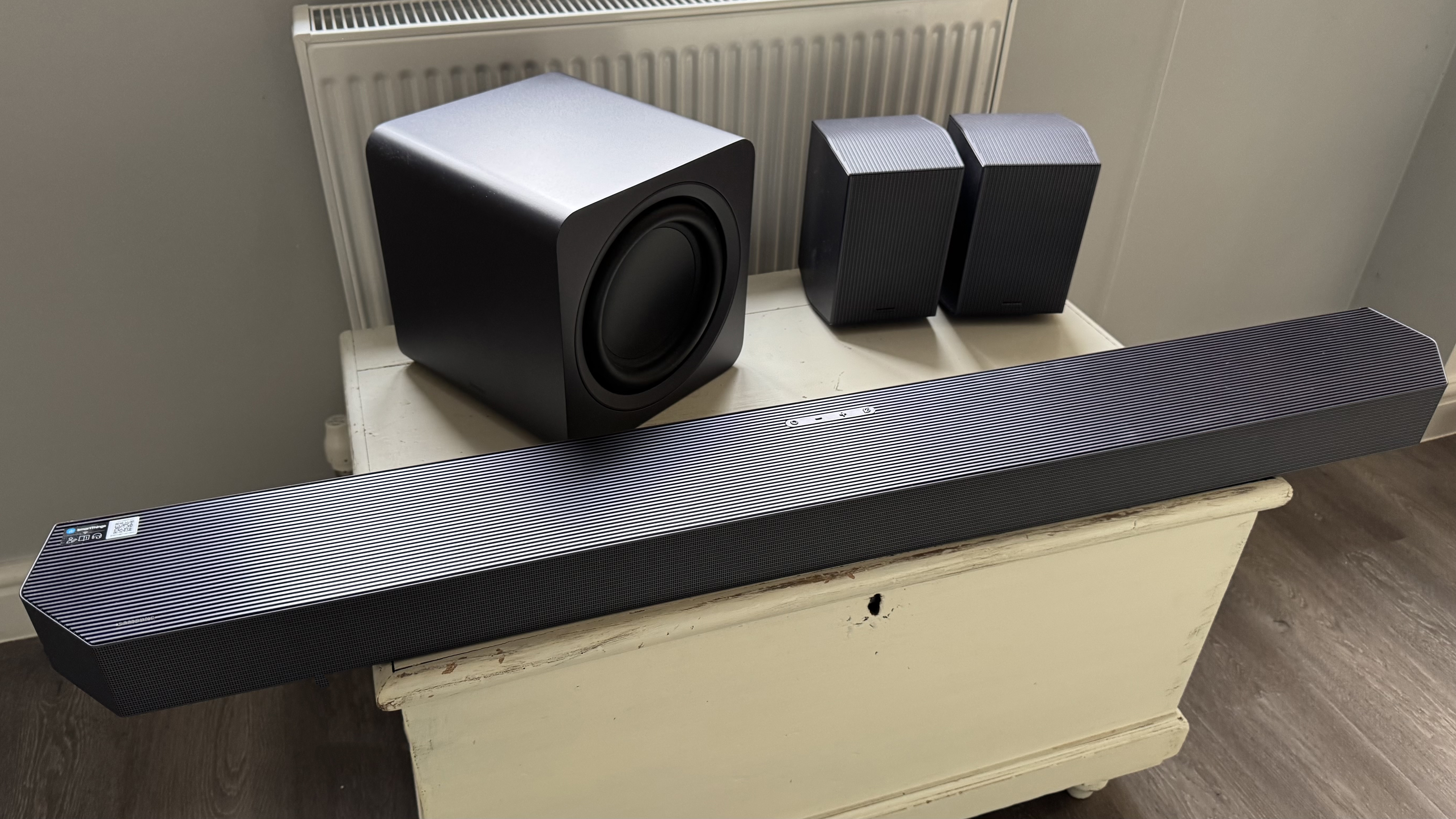
Samsung has been able to ring in the changes for the Q990F without damaging the deliriously good combination of power and precision that have made the brand’s flagship soundbars so popular with home cinema fans for so long.
In fact, in most ways, the bold new subwoofer design introduced for the Q990F brings palpable benefits, including a less directional and smoother sound, without sacrificing a hint of depth or power. Its timing isn't as on-point as that of old, though.
There’s also no other soundbar out there for the same money that can both craft a powerful and seamless dome of sound for movie nights and switch over to a truly enjoyable music performance. Pair that with a Samsung TV capable of Q-Symphony and you'll have a true cinematic 'wall of sound' experience.
Add in a strong roster of features, format support and connections, and the Samsung HQ-Q990F becomes nigh-on irresistible for anyone who values a full surround experience over the convenience of a simple single bar solution.
Also consider
The LG S95TR trades blows with the HW-Q990F in terms of core specification and features. It, too, is a four-piece system, complete with external subwoofer and rears, and it too offers oodles of power across a high (9.1.5) channel count. The ‘.5’ bit of the channel count refers to an extra up-firing speaker that repeats the centre channel information, in a bid to make voices sound like they’re coming from your screen rather than the soundbar underneath. While the power and aggression of LG’s soundbar is undeniable, though, for me it doesn’t deliver as much cohesion and immersive immediacy as the Q990F does.
JBL’s Bar 1300 delivers the same 11.1.4 channel count as the Q990F, as well as extreme amounts of power and an ability to switch well between movie and musical uses. Its wireless and rechargeable rear speakers are cool, too, in the way they let you move them easily around the house when you want to use them as separate music streaming speakers. Unless you really intend to use this feature of the Bar 1300 a lot, though, the faff involved with recharging them and a slight lightness to the rear speakers’ sound versus the monster soundbar and subwoofer give the Samsung Q990F the performance edge.
John Archer has been testing TVs and AV gear for over 25 years, having worked on Home Cinema Choice magazine. He's a contributor to Forbes, TechRadar, Trusted Reviews, Wired and many more places – if you've owned a TV in the last couple of decades, John's probably reviewed it somewhere. He's seen so many hot new technologies come and go, like tears in the rain.
You must confirm your public display name before commenting
Please logout and then login again, you will then be prompted to enter your display name.
